Clipart tagged: ‘manufacture’
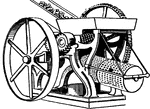
Cross Mill and Sieves (Glue)
This illustration shows a cross mill and the sieves used to crush and filter bones in glue manufacturing.
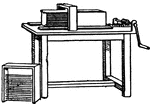
Cutting Machine (Glue Manufacturing)
This illustration shows a frame with cutting wires, and a machine capable of cutting 20,000 glue cakes…

Drying Rack (Glue Manufacturing)
This illustration shows a drying frame and drying rack used in glue manufacturing.
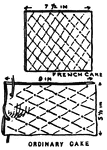
Glue Cake (Manufacturing)
This illustration shows two glue cakes after the glue manufacturing process. The top image is a french…

Inventor: Burroughs
"There's an end to my troubles," said William Seward Burroughs as he threw into the street the first…

Jute
Jute, also known as Calcutta Hemp, is a fiber obtained from several species of the genus Corchorus of…

Carding Process in the Manufacuring of Jute
After the softening process in the manufacturing of jute, the fibers are about six feet long, and are…

Softening Process in the Manufacturing of Jute
In the manufacturing of jute, the jute fiber must first be softened. The softening machine consists…

Spinning Process in the Manufacturing of Jute
In the last step of the manufacturing process of the jute plant, the material is taken on bobbins to…
Consumers' League Label
"The Consumer's League is trying to raise standards in relation to the sanitation of workrooms and shops…

Pillow and Bobbins (Lace Manufacture)
This illustration shows the pillow and bobbins used in pillow lace manufacture.

Liquid in Molds (Glue)
This illustration shows liquid run into molds to cool into jelly in the glue manufacturing process.

Boyer Machine Shop
"The Boyer Machine Shop, St. Louis, where one of the first successful adding and listing machines was…

Glass manufacturing
"Five kinds of glass are made: flint glass, or crystal; crown glass, broad sheet glass, bottle, or green…
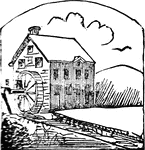
Mill
The building with its machinery, where grinding or some process of manufacturing is carried on.
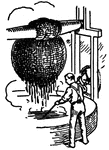
Old Method of Boiling and Drying (Glue)
This illustration shows the old method of boiling glue in a rope bag, then squeezed dry against a beam.
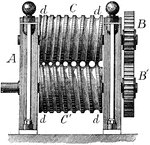
Spiral Roller
A rolling pair of cylinders which metal is passed through to form bars, plates, or sheets.
Rollers (Glue)
This illustration shows liquid in glue manufacturing being carried on rollers, cooled with cold water,…

Manufacturing of Soap
"When the soap is properly formed, the lye is carefully separated from it, and then it is removed in…
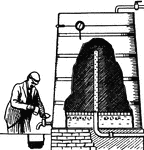
Vacuum Boiler, Testing the Liquid (Glue)
This illustration shows a vacuum boiler in which liquid to become glue is boiled by steam, as well as…
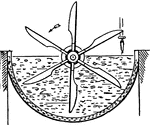
Wash Box for Removing Lime
This illustration shows a wash box used for removing lime from materials used in glue manufacturing.










